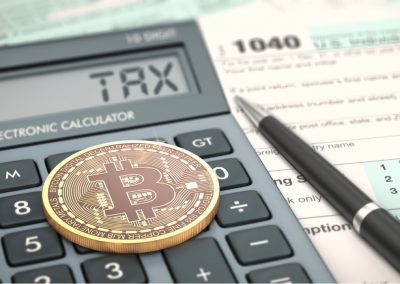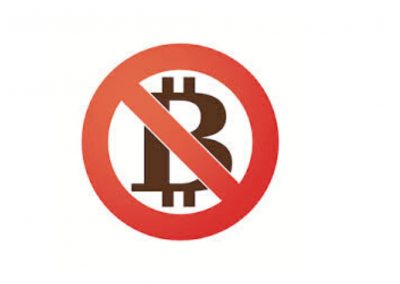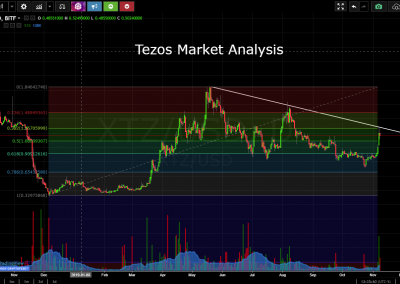If you want to be a cryptocurrency trader, then you need to understand the cryptocurrency terms. And if the crypto sphere has one thing, it’s a lot of terminologies. Whether you’re talking consensus methods or wallets, it can be easy to get lost in the crypto chat.
Now, this isn’t all of the terms, but with an understanding of these cryptocurrency terms, you’ll find that it’s much easier to talk and trade in no time. Here is a list of the 31 most used cryptocurrency terms arranged alphabetically.
What Are the Terms Cryptocurrency Traders MUST Know?
- “Hodl” – An intentionally misspelled term that stands for “Hold on for Dear Life.” It refers to an investment strategy of holding, rather than trading or selling coins with the hope that they will eventually rise in value.
- 51% Attack – This is when miners control a majority of the hashing power in the network and can double-spend coins. This allows users to essentially steal crypto by spending the same money more than once.
- Altcoin – This is an umbrella term cryptocurrency traders use that defines any coin that is not bitcoin.
- Bitcoin (BTC) – The original cryptocurrency. While it holds transactional value, it is used more as a store of value. Cryptocurrency traders also use it to gauge the status of the market.
- Block – Sets of new transactions to be added into the ledger. Once verified by a consensus mechanism, the transactions are added to the blockchain and are immutable (cannot be changed).
- Blockchain – The technology that cryptocurrencies use to function as a trustless system through consensus. It refers to an open ledger that displays transactions allowing for users to verify the authenticity of their coin holdings.
- Coin – A mineable, tradable cryptocurrency that also stores value. Not to be confused with tokens.
- Crypto – An abbreviation for cryptocurrency.
- Cryptocurrency – A misnomer used to define both tokens and coins. It is a digital asset that incorporates complex cryptography to secure and prove transactions across its blockchain.
- DAO – A Decentralized Autonomous Organization is an agency build on top of the blockchain that allows investors to vote on projects to allocate funds.
- DApps – Decentralized Applications. This is an application that functions on the blockchain but is more complex than a smart contract.
- Ethereum (ETH) – The second most popular cryptocurrency. This open-source platform allows users to build projects off their blockchain. It is also used to generate tokens for ICOs.
- FOMO – Fear of Missing Out. This is a psychological effect can lead cryptocurrency traders into the belief that failing to act will cause them to miss potential profits. It can result in profit loss and a mismanaged portfolio.
- Fork – A permanent split from the original blockchain to make permanent alterations to the current blockchain. The reasons behind this are numerous, from correcting theft and hacking, to launching development updates, and to creating new cryptos are a few examples.
- FUD – Fear, Uncertainty, and Doubt. Usually, this refers to a spread of information geared towards creating havoc in the markets to manipulate the prices. Cryptocurrency traders unaware of FUD can damage their portfolios.
- ICO – Initial Coin Offering. This is a way developers can raise funds for their platform by selling off tokens to trade or to hold until the platform finishes development. These tokens can be exchanged for coins or used for transactions on the platform.
- Market Cap – An illustration of the total value of a certain cryptocurrency. This provides cryptocurrency traders with an idea of how much community support and money is behind a specific crypto.
- Mining – A process where nodes on the network work to verify blocks on the blockchain. Miners earn rewards for mining through coins. This incentivizes the dedication of their resources to the network.
- Moon – A term used to describe a cryptocurrency that will rapidly appreciate in value over a short window of time. Cryptocurrency traders will often talk about a coin’s potential to moon.
- PoS –Proof of Stake. This is one of two main consensus mechanisms. It requires users who wise to create a node to hold a certain amount of coins. This “stake” allows them to function as one of the nodes securing blocks to the chain.
- PoW – Proof of Work. This is one of two main consensus mechanisms. It is a resource-intensive process cryptocurrencies use to secure blocks on the blockchain.
- Private Coin – A crypto that takes extra steps to help ensure its users remain anonymous.
- Private Key – A set of letters and numbers that allows access to a wallet that stores cryptocurrency. This should always be kept secure.
- Public Key – A set of letters and numbers that individuals use to send crypto to a person’s wallet. This does not need to be secure, but can be pseudo or fully anonymous in some cases.
- Shatoshi – At one hundred millionths of a bitcoin, this cryptocurrency term represents the smallest fraction of a bitcoin. Some cryptocurrency traders prefer to use this term instead of USD when talking about the market value of a coin.
- Shatoshi Nakamodo – The anonymous creator of the white paper that served as the foundation for bitcoin’s development. This person disappeared after bitcoin’s inception and yet to be identified.
- Shitcoin – A cryptocurrency that has either failed or believed to fail in the future.
- Smart Contract – A logically simple computer program that functions on the blockchain. These programs typically use an “If…then…” structure to them and use the blockchain’s immutability to secure outcomes.
- The Flippening – The idea held by some that eventually Ethereum will be worth more per coin than bitcoin.
- Tokens – Often confused with coins. These are typically representations of value in a system. They can be traded for coins when a platform develops, held as an investment, or used to pay for services on a platform.
- Wallet – The place where a cryptocurrency trader stores their crypto. There are several different varieties of wallet depending upon the level of security and liquidity needed.
Know Your Cryptocurrency Terms
The crypto sphere can be a reasonably intense place with all of the terminology. And there’s a lot of confusion out there on what each term means. But knowing the correct definitions of these terms will help you better understand how to gain the most out of cryptocurrencies. Being a successful cryptocurrency trader starts with understanding these terms. Knowledge is the foundation of any solid investment decisions.











